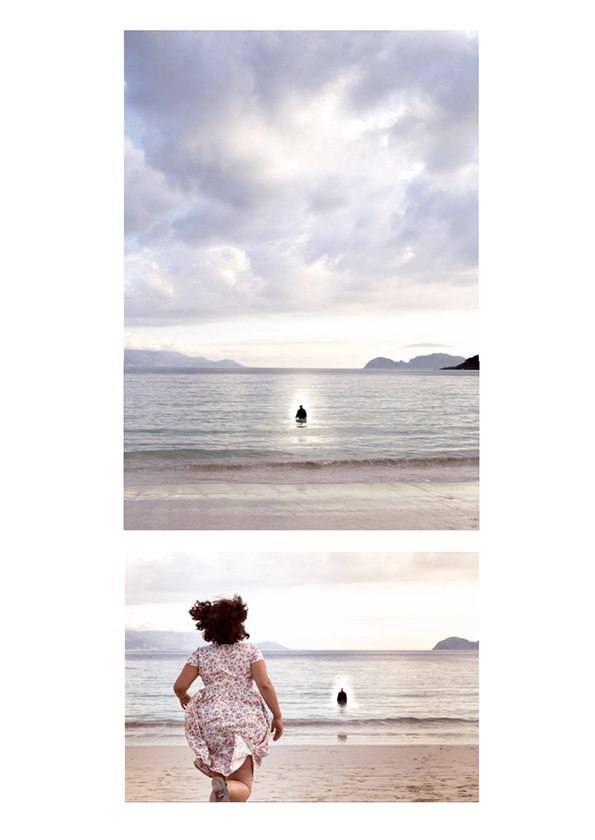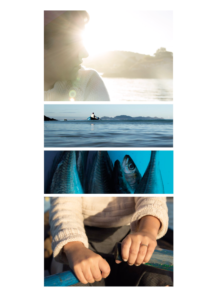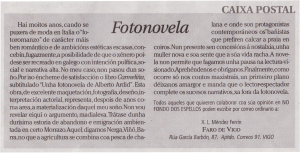
Carmeliña. 2014.
The photonovel narrates the events that took place during one day of the life of Carmeliña, a young woman of twenty-five years old who has not heard from her man for a long time… The story is immersed in the social conflict that emerged in the late 1970s in Galicia, at the moment when the first nudists begin to arrive at the beach of Barra. Both the script and the images combine real and documented events with fictitious and denatured treatments. It should be noted that Carmeliña is the first photonovel published in Galician language in history.



The project was carried out thanks to a grant from the Xunta de Galicia under the Iniciativa Xove programme.
It is mentioned for its study in the textbook of Galician Language and Literature of the Editorial Anaya of the course 2016-2017
It can be read online on the web
And listen the interview on Radio Galega
A preview:
Carmeliña received very good reviews, among them, the one by Xosé Luís Méndez Ferrín in Faro de Vigo:
Fotonovela
Hai moitos anos, cando se puxera de moda en Italia o ¨fotoromanzo” de carácter máis ben romántico e de ambicións estéticas escasas, concebín, fugazmente, a posibilidade de que o xénero poidese ser recreado en galego con intención política, social e narrativa alta. No meu caso, non pasou dun soño. Por iso éncherne de satisfacción o libro Carmeliña, subtitulado “Unha fotonovela de Alberto Ardid”. Esta obra, de exeelente maquetación, fotografía, deseño, interpretación actorial, representa, despois de anos coma area, a materialización daquel meu soño. Non vou revelar eiquí o argumento, madialeva. Trátase dunha durísima estoria de abandono e emigración ambientada en certo Morrazo. Aquel,digamos Nerga,Viñó,Barra,no que a agricultura se combina coa pesca de chalana e onde son protagonistas contemporáneos os bañistas que prefiren calcar a praia en coiros. Nun presente sen concesións á nostalxia, unha muller nova e soa sente que a súa vida racha. A novela non permite que fagamos unha pausa na lectura-visionado. Aprehéndenose obriganos. Finalmente, como ocorre só nos contos maxistrais, un primeiro plano déixanos amargor e manda que o lector-espectador complete os sucesos narrativos, xa fora da fotonovela.
X. L. Méndez Ferrín

